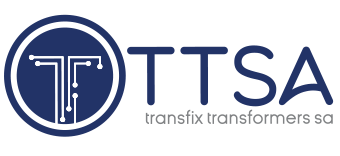Eskom Holdings’s risk premium is dwindling as a turnaround at South Africa’s State-owned electricity company gathers momentum. The extra yield investors demand to take on the risk of holding the utility’s dollar debt without the benefit of a government guarantee narrowed to the lowest on record following the publication of the utility’s results on Thursday. And the yield premium over comparable US Treasuries is also at the lowest since the Eskom securities were issued in 2018.
South Africa’s total solar PV capacity surged to 8.97 GW this year, which includes 2.8 GW from public procurement and 6.1 GW from private-sector contributions, 11.9% higher than in 2023. A further 375 MW of capacity is scheduled to come online in 2025.
State-owned power utility Eskom has reported a R25.5-billion loss before tax for the financial year ending March 31, 2024, following a year marked by operational setbacks, financial strain and systemic inefficiencies. With 329 days of loadshedding and heavy reliance on costly open-cycle gas turbines (OCGTs) during the 2024 financial year, along with escalating municipal debt, the utility continued to face persistent challenges while working towards recovery.
Trade and development finance institution the African Export-Import Bank (Afreximbank) has signed a project preparation facility financing agreement for an up to 200 MW private-sector, reservoir-based hydropower project to be located along the Lufira river, in the Democratic Republic of Congo (DRC). The bank has partnered with independent power producer Kipay Investments, which will develop, design, build, install, commission and operate, as well as manage, the hydroelectric power plant.
South Africa is “still in the foothills of economic recovery” and, while external influences must still be skillfully navigated, the country’s future economic performance will hinge mainly on domestic policy decisions that maintain a macroenvironment that is efficient, stable and consistent for investment and job-rich growth. This is the main message of the North-West University Business School’s Policy Uncertainty Index (PUI) for the fourth quarter, with the PUI unexpectedly rising much further into negative territory to 65.7, compared with 53.5 in the third quarter of the year, said NWU Business School Professor Raymond Parsons.
From the moment Mpho Putsoenyane’s daughter Hlompho was born in Zamdela, a South African township beside the smokestacks and gas flares of Sasol’s oldest coal-to-liquid refinery, the baby struggled to breathe. Last year, when she was four months old, she turned purple and started gasping. Her parents rushed the baby to hospital, where medics only just revived her heart with a defibrillator, Putsoenyane recalls.
The Steinmüller Africa Kendal Boilerserve team has been awarded the Eskom Kendal Power Station Contractor of the Year Award 2024.
This award demonstrates the company’s continued role as leaders in the steam generation plant service industry.
Nine people were injured at Eskom’s Matla power station on December 12 when a transformer exploded, affecting Unit 6. As a precautionary measure, Unit 5 was also taken offline to ensure the safety of all employees and contractors on-site.
State-owned power utility Eskom has sparked debate with its latest tariff proposal, resulting in uncertainties for solar power users.
Solar energy company GoSolr co-founder Patrick Narbel points out that, although South Africa’s electricity system needs tariff reviews to ensure an efficient and fair energy system, there are risks with getting them wrong, including market distortion.
The selection of Pele Green Energy (PGE) to supply renewable energy to the South African ferrochrome smelters operated by the Glencore Merafe Venture represents an important milestone in the steady yet uneven evolution of South Africa’s electricity industry. Its significance is not immediately apparent, largely because the novelty of such multidecade power purchase agreements (PPAs) between electricity-intensive private firms and independent power producers (IPPs) has worn off somewhat three-and-a-half years after President Cyril Ramaphosa successfully twisted a reluctant Gwede Mantashe’s arm to enable such deals at scale.
INDUSTRY NEWS
WHERE TO FIND US
Address
9 Yellow Street
Botshabelo Industrial Area
Botshabelo, Free State
Call / Email Us
Tel: +27 (0) 61 956 6772
Email: info@transfix.co.za
SOME OF OUR PRODUCTS
CALENDAR
| M | T | W | T | F | S | S |
|---|---|---|---|---|---|---|
| 1 | 2 | 3 | 4 | 5 | 6 | |
| 7 | 8 | 9 | 10 | 11 | 12 | 13 |
| 14 | 15 | 16 | 17 | 18 | 19 | 20 |
| 21 | 22 | 23 | 24 | 25 | 26 | 27 |
| 28 | 29 | 30 | 31 | |||
